Here’s what we’ve seen works regionally. Public safety, right? And so sometimes we have sheriff deputies, for example, to cover an entire county. Or perhaps there’s a state police post that covers a region of a state. Or perhaps there’s joint fire departments, right that work geographically. Pretty easy stuff. Sometimes we may have regional infrastructure investments. Maybe it’s a water district. Or a sewer district, right.
Transportation, you know, the highway system that we have. Sometimes it is an educational system, right? That brings us together. Maybe our regional K12 ISDs, intermediate school districts. Maybe it’s K12 education, or excuse me, local community colleges. But there’s others that probably bring us together as a region. So I want you to kind of reflect again. What are the things that kind of keep you from working even better together?
What are some of those?
–
[Audience Member]
Turf wars.
– Turf wars, absolutely.
–
[Audience Member]
Distance.
– Distance, physical distance, absolutely. You know, and a turf war is a big thing in terms of what’s mine is mine, and what’s yours is ours. Right, it’s sometimes what we think, and then there’s these community rivalries, you know, sometimes are based on sports rivalries with high schools and those type of things. Distance, another huge one, yes.
–
[Audience Member]
Different industries.
– Different industries, right. So the sectors, you don’t see yourself necessarily connecting with that community, ’cause okay, they’re doing their stuff, and we’re over here, right? And so to your point earlier, in terms of, well maybe there’s different regions that we connect, and we can pivot to based on what we need. But sometimes we look at the things that keep us apart, versus potential to keep us together or bring us together. Yeah.
– Identities.
– Losing identities.
Yeah, so what you’re saying is, “Well if we work more broadly, “what does that mean to my community?” Right? ‘Cause we’re all little parochial, right? That’s just human nature, yeah.
–
[Audience Member]
Oldtimers, newcomers.
– Oldtimers, newcomers, absolutely. Yeah, particularly on the leadership, we’re going to get to that, you’re teeing that up. Boy, I get you guys warmed up now, aren’t you?
(audience laughing)
– Length of transportation, options to traverse the distances.
– Yeah, sort of kind of goes a little deeper in terms of you know, not only is it physically, but just, you know, kind of meandering there. There’s not an easy way to get from here to there.
–
[Audience Member]
Or, aside from just their personal vehicles, there’s no bus.
– No bus so yeah, or public transportation, absolutely. Good stuff. Really good stuff. You know, sometimes, the low-hanging fruit in terms of what brings us together as a region, isn’t the best. It’s not the– The easy thing that brings us together isn’t maybe the best thing that brings us together. And I think this cartoon illustrates it. The low-hanging fruit isn’t always the sweetest, right? It’s good.
But sometimes we stop there.
If rural Wisconsin, rural Michigan where I’m from, rural America, is going to compete, it’s going to mean that we’re going to have to work together in ways that probably heretofore, we haven’t, right? In terms of trying to martial our resources in a different manner. You know Darwin has a great quote, he says, “It’s the strongest of the species “that survives, nor the weakest, “but those most responsive to change.”
Those most responsive to change. You know I talked about it a little bit this morning. But from a regional perspective, we’re going to have to change how we think, act and do things differently. The reality is if you look at global competition, after World War II the United States dominated the world economy.
But if we look recently, last 10 years, growth is increasingly happening elsewhere. Primarily the BRIC countries. China, Brazil, India, Russia. So the question is, is America declining or is the rest of the world catching up? I think it’s the latter, I think it’s the latter. The reality is we have new competitors, but with that comes perhaps new opportunities.
And we have to recognize as leaders in rural places, that the rules have changed. We now have to say we’re not competing with that town down the road in Wisconsin, or across the border in Minnesota or down to the south in Iowa,
Illinois, get my geography right. But rather we’re competing on a global stage in many industries; not all, but in many industries.
And if so, we have to also recognize that our competitors, particularly our foreign competitors, have much more flexible infrastructure, easier decision making, better partnerships, than perhaps we have here in our states. They don’t have our legacy costs, that sometimes hamper our ability to be lighter on our feet. And you know what? They really don’t care about us. I know it’s disheartening, but the reality is they don’t care about us. And so, what we have to do us change how we act, how we think, how we do business at a much different level than we have in the past.
We have to recognize that the world is changing.
So I think if I’m historical in terms of looking at different waves, it’s really three different waves of economic– Well, let me back up. I’m gettin’ one slide ahead of myself. Apologize. There are some mega-trends that are at play. One, there’s an expanded importance of creative and knowledge economies. We’re also seeing a mega-trend in terms of subdividing or outsourcing the various value-chain functions into more independent, interdependent activities.
We’re seeing regions become more specialized. They’re saying, you know what, we can compete in this area. We can make the best cheese in the world.
And we’re going to sell it globally.
And we’re seeing expanded growth of entrepreneurs and self-employed. The other thing is that we’re seeing regions connect with other regions that have resources that they can rely on. And this is new. It used to be we were vertically integrated. We wanted to kind of have everything come into ourselves. So really this is what I want to get to. There’s been three waves of economic development, and we’re kind of at the third wave from my analysis. So the first wave was all about industrial recruiting. And I’d venture to say some in this room did this wave, right? Some of you were about filling your industrial parks, right? How we did that, we offered subsidies, tax abatements, tax breaks. We provided infrastructure. And then from there it became all about retaining and expanding businesses. We did that primarily through deregulation. But we’d had some workforce development. So some of these things are continuing, it’s good.
But I contend we’re now on a third wave.
And Paul Romer who is a Nobel Prize in Economics, I think, summarizes it best in terms of where we are. He says, “You know, economic growth occurs “where people take resources and rearrange them “in ways that are more valuable.”
Take your resources and rearrange them in ways that are more valuable.
Okay. Said another way, it’s not coming from better recipes, or excuse me, it comes from better recipes, not more cooking.
And so that’s what you’re going to have to do as rural communities in Wisconsin. How do we create better recipes from our collective assets? And that really feeds into the third wave in terms of where we are from economic development perspective. And that’s really regional competitiveness. And so the strategies to do that is entrepreneurship, regional collaboration and identification and the development of regional clusters. I’ll kind of unpack that a little bit later in terms of what that means. I contend that we’re kind of at the end of a curve that was part of our grandfather’s economy.
Right? And our prosperity kind of is, if we rely on our grandfather’s economy, is dipping off. And what we need to do is kind of create a new curve that is based on our grandchildren’s economy, right? And we’re kind of at that sweet spot right now. In terms of all right, how do we create that new curve? And there’s a lot of different strategies in terms of regional tourism, regional food systems, innovation hubs, that may provide pathways to get there.
You know when we look back at our grandfather’s economy, everything was pretty much segregated, right? People kind of stayed in their lane.
Unfortunately… oftentimes when I look at regions and communities, particularly in rural places, that are trying to transition into their grandchildren’s economy, they’re not really responding differently.
We’re often stuck in our lanes. It’s almost as if we have one of those invisible fences, those collars that we put on dogs.
We go to work with the community, we kind of get shocked. Right?
It’s cool how that flashes, isn’t it?
(audience chuckling)
So, we’re going to have to take that collar off.
And it starts with really looking at, well, who are our opportunities? Or where do our opportunities line? And how do we define our region? And what is a region? Well, region is some similarities, whether it be geographic or others. Similar within and differences between, right? To your point earlier, it’s a place of interest with unique identity and meaning. So there’s a lot of different scales if we just look at Wisconsin in terms of the different regional approaches that are available. It’s important to look at what makes sense, because sometimes a neighboring jurisdiction may not have anything in common with you.
Or, state or county regions may not have. And so we can’t be afraid to kind of cross traditional political boundaries
to form new economic partnerships.
I think secondly, is once defined,
the leaders are moving away by focusing on opportunities.
Okay, versus problems. And that’s a different set of thinking. Focusing on opportunities versus problems. And the way they’re doing that is closing triangles. And what I mean by that is, I know Jerry. Oh, oh my god, and I know Gerry. Jerry, I want you to meet Gerry, yeah. Jerry with a J, Gerry with a G. So I’m closing the triangle, right?
If you’ve heard me talk repeatedly about networks, and the importance of networks. But it takes different leadership. You know in our grandfather’s economy it was all about hierarchies, right?
In our grandchildren’s economy, it’s about networks. In our grandfather’s, it was about command and control. In our grandchildren’s, it’s about link and leverage that linkage in a different way. In our grandfather’s economy it was about being vertically integrated, in our grandchildren’s it’s about horizontally connecting our assets in a strategic fashion. It used to be about transactions, so we were all about making that next transaction and moving on. Now it’s about relationships. And how we can build trust with one another as a collection of communities
and have a deeper relationship. It used to be about protecting our boundaries. Right? Remember that invisible fence. And to your point earlier in terms of being a little parochial, to strengthening the cores.
And I’ll be honest with you, as rural communities, this is the toughest.
Because that core may be a bigger city.
Likely, it’s a bigger city. So we may rise with the success of Madison, in Milwaukee and La Crosse and Green Bay. And we’re going to have to celebrate their success as much as our success, if we’re going to look at this differently. So I’m going to give you an example. Fargo, North Dakota region.
We went to Fargo because they have the lowest unemployment rate United States. At the time of our research it was 4.1%, now it’s at 2.8%.
So they lead the nation. It was interesting ’cause we were thinking, “Okay, what are you doing?” And they have some advantages from an economic perspective, but what we were struck is how even at a low unemployment rate, they are very aggressive in terms of advancing their region. And so what they’ve done is North Dakota State University, which is in Fargo, has connected with Minnesota State at Moorhead, just across the river. Two universities from different states don’t usually connect like this, but what they’ve done is said, “All right, how can we lead the world? “What is our collective strength “if we look at both institutions “and say, you know what, we can be competitive globally?”
So they identified a few areas and then they drew a hundred-mile radius around Fargo-Moorhead, and then they did a cluster analysis that says, how does that connect with the areas that we’re pretty strong in? And then how do we transfer that expertise that we have at the university, in the ivory tower, out to these small towns, to help them innovate? To help them do better? And so it’s truly a regional strategy in terms of fostering innovations, improving efficiency, because the people in the ivory tower, from the academy that I represent are all about connecting their assets to smaller communities across the region. Not in every area, I’ll be honest.
They’re picking winners. But they’re picking winners based on those areas where they have enough bandwidth, enough critical mass to be able to compete globally, okay. I talked about this earlier this morning. Apologize for that.
So it’s all about strengthening networks.
Networks, networks, networks. I’ve said that repeatedly today. Well, what do regional networks do? I think there’s really three C’s that happen when we look at networks. One, it spurs conversation.
It spurs conversation, talking to one another. Secondly it enhances connections.
So once we talk and we learn to trust each other,
we get to personal interaction stage, we say, all right, what can we do together? And then collectively it builds capacity. So those are what I refer to as the three C’s. It starts with discussion, conversation, from that conversation we have capacity, or excuse me, connection and that’s going to build capacity. But sometimes to have this really take root it takes some safe place. For this to take, to unfold.
Because sometimes people get a little parochial when they come to the table. So we have to have regular forums to really uncover some of these assets and to link these opportunities. So here’s the audience participation, for three minutes, ’cause I want to keep us on time. Plus I have a flight to catch. I want you to turn to your neighbor and think about your community and then think about your neighbor that you turn to, share one of those assets and then think, how can we connect the dots? Okay, what is it that they offer that we offer that perhaps we can connect the dots?
So we teach with our colleagues at Purdue University this approach called strategic doing. And we ask really three questions. What can you do together? So what’s the possibilities? What should we do together, so we’re kind of narrowing it in terms of saying okay that all the possibilities, here’s some more tightly written set of activities that perhaps we have the ability to move forward, and then what will we do together? So that’s your action plan, right? Then we always add a fourth one. When are we going to get back together, so that we keep it moving.
So I think as you talk about working with your communities, ya know, just asking these questions will help really tee up a regional economic development plan. And there’s a lot of elements that come together, but it really looks at encouraging critical mass.
To be able to act locally but compete globally.
It means looking at prioritizing your investments
that’s going to really spur innovation and unlock opportunities to really transform that region’s economy. So I want to give a shout out to a couple of your winners, ’cause I think that they’re a good example in terms of what’s possible regionally. And so, do we have anybody from Green County? Yeah so you ladies today, wonderful job in terms of this is a regional community-wide agri-tourism weekend, right?
So different partners that perhaps previously hadn’t had the opportunity to work to and really celebrate in local venues, but on a broader geographical scale than just one particular site, right? And so that’s the start of really a regional effort in terms of what you’ve done there in Green County. Well congratulations on being recognized. And again, as I have an opportunity to kind of share my perspectives nationwide, you’re now part of my slide deck. Oh yeah, there you go. Vernon Trails, our other regional win. Anybody here from Vernon? They may have had to head out, but again a regional effort, really looking at a trail system so again looking at it from a recreational perspective, how do we capitalize on non-motorized trails in a meaningful way?
Bringing together a series of community events in a more coordinated fashion, so you’re not tripping over one another. 100% volunteer run.
Which is impressive in terms of what they’re doing.
So again, we work a lot with our colleagues at Purdue. And they have a Purdue Center for Innovation and Development and they really have these different forums that kind of bring the opportunity for people to come together to tease out just what you folks did a little earlier in terms of turning to your neighbor. And they really have these civic networks that they’ve developed to talk about information. So look at this picture here. This group of ladies. The one lady I the middle is from Kokomo, Indiana. And this happened to take place a week after Delphi announced that they were closing their plant in Kokomo, and I think it was 850 jobs.
Really a devastating economic hit for that particular community. But what do you notice as you look at that lady in the middle?
– She’s smiling.
– She’s smiling. Because she has hope. Because she’s talking to other communities that she’s met at these forums and says, “Okay, yep, we’ve just had a hit, “but we now have opportunities if I can connect “with this person and I can connect her, “exchanging information.” This photo was not set up. But it kind of gives you the illustration in terms of the power of conversations, the three C’s, right? What we can do together and how we’re going to move together. It’s really when we have the three C’s that we can really foster prosperity. And it starts with collaboration.
So ya have that conversation, look at capacity, and you build that shared resources, and that will hopefully lead to collaboration. And it’s through that collaboration– easy for you to say– that we can get innovation. If you look across the country I think no one does this better than the California wine industry. In terms of how they have brought together various pieces of their cluster. In terms of UC Davis and the Mondavi Wine Institute that they have there. In terms of the advertising industry, in terms of the convention and visitor’s bureau, in terms of the labeling. It’s a lot of stuff coming together.
But that’s why California wine is now competing globally. Right? ‘Cause they have triaged their resources in an effective way, perhaps better than anybody else from a very specific region. And we can learn from them. Here’s other examples. So I traveled to Corvallis, Oregon a few years ago. They have a regional initiative called “Prosperity that Fits”. And their partner, their partner in one of their initiatives is Austin, Texas. And I say, “Well, that’s pretty interesting. “That’s a pretty long ways away.” And here’s the reason. So Hewlett Packard, the computer people, used to have a major facility in Corvallis. They consolidated operations in Austin. A lot of those computer engineers says, “You know what, “we kind of like living here in the Pacific Northwest. “We’re not going to move to Austin.” And so they connected with their colleagues in Austin and says, “You know, we’ve got a lot of talent here. “Just ’cause the jobs move, the people are here.” And so they continued to work together on a very strategic way that no other company does in terms of keeping a talent base that’s not officially tied to them. North Carolina’s Research Triangle North, so you’ve all heard of the Research Triangle, right? In Raleigh-Durham? So this is a group of five counties. Kind of a north central-ish, North Carolina. Now the Research Triangle is kind of tucked away in the east. And theses five counties say, “How do we tap “into all the economic activity that’s happening “at the traditional Research Triangle?” The reality is it’s very expensive to do business in Raleigh-Durham. Land prices are extremely high. I mean there’s a lot of things because it’s grown in such popularity. And so they have actually branded themselves as Research Triangle North. And they have connected– So it’s more than just branding, ’cause I want to make sure you understand that. They have purposely connected with the leaders of the Research Triangle and the institutions down there, NC State, Duke and North Carolina and says, “All right, how do we tap into the networks? “How do we tap into the learning that you’re doing “and replicate it here?” Because there’s people perhaps that want to be part of your Research Triangle that just can’t get in, right? Because of gentrification for lack of better terms. Right? They can’t afford to operate there. And so they’re all in, I mean the traditional people say, “Yeah, we’ll expand.” Been very successful in terms of how they’ve been able to affect a part of rural North Carolina and tap into some of the innovation that’s taken place there.
I contend though that really as you look at regionalism, it’s going to take a different type of leader. You’re all leaders in this room, so you’re going to have to do things differently. Again where you’re grandfather talked about being very centralized in terms of how we approach
economic development, what we need today is really distributed and shared leadership.
It’s not about one leader, it’s about many leaders. Right? It’s not about command and control, as I mentioned earlier, but it’s about link and leverage. We used to lead from the front, now we’re going to lead from the front and the rear. Lot of different examples in terms of communities that are doing– I have a few of them here. I’ve got these presentations, by the way, on the side over there and there, so you can take this home with you. But here’s just some examples in terms of communities that, regions I should say, that have come together. And you can see some of them really span states. Some of them involve tribal nations, like the one in Montana, focusing on different things.
Each of them have powerful lessons that we can learn from so I encourage you to kind of look them out, I have the websites there. I’m going to highlight a few communities that kind of struck me in terms of what they’re doing. Peoria, Illinois. So they have recently finished construction on the Next Innovation Center. This is really a regional center that brings together their assets from across the region, into one center. So, they’re bringing together key assets like Caterpillar, CAT, Bradley University, the medical center, the city, all together in one room.
Not one room, 50,000 square feet. Lots of rooms. But each of these companies and others have said, “You know what, we’ll lend some of our top innovative people “to think differently with the people from the medical field, “or to think different from the the people from the university.” So it’s a shift in terms of thinking and sharing disciplines all under one space essentially, to help expand the innovation that’s taken place there. Moscow, Idaho, really a small town, population about 12,000 people, home of the University of Idaho, which is a small university about 9500 people. So not a very big place. So it was there that the mayor of Moscow says, “You know what? “We’re not capitalizing on the assets that we have.” Moscow, Idaho is eight miles from Pullman Washington which is the home of Washington State University, a little bigger institution. Probably about 25,000, eight miles. So she took it upon herself and she branded this as the Palouse Knowledge Corridor. This is called the Palouse Valley. Really productive ag area. And then she actually got some resources from private industry and put together a student innovation competition with a couple caveats. If you want to compete, top prize I think was $20,000. You had to have a team from both universities. From both University of Idaho and Washington State. She kind of put all these contacts together, kids you kind of get together on your own. Let me tell ya, so again I come from the academy, so when people start messing with our students we get concerned. And so now these two universities started talking, because she got the students talking.
And it was just two years ago that these two universities, because of her effort in terms of getting them to talk together actually created the first double institution department that actually crossed the state lines. Very innovative. So again, mayors, community leaders can do that. You can be the catalyst to make this happen. Greater Milwaukee, in terms of what they’ve been doing. A Wisconsin example with regional clusters looking at water. And how they can lead the world in terms of some of the research that’s taken place, connecting both the, those at the various educational institutions as well as the water related industries that are housed there in Milwaukee, or the greater Milwaukee area. There are lots of examples, I know you can’t really read this slide, but there are examples across the country in terms of regions coming together and saying here’s how we can compete. Here’s those assets that we can lead the world in.
And they’ve taken that next step in terms of organizing them in a different way and working together regionally to make it happen. One of my favorite stories, and I talked about Columbus, Indiana this morning, but I’m going to kind of finish off with them, because I think it’s one of the most instructive. So, they have a regional initiative
that’s really designed to increase household income by the next step, if you will, on the career. So let’s kind of look at a ladder in terms of thinking, okay, for me to move on that next rung, here’s the additional training that I’m going to need, right? And in their analysis they said, if we provided that training to get people the skills to be able to advance themselves up that next rung on the ladder, perhaps two, we will do more to advance and improve household income than anything else that we can do. Pretty simple, right? And so they says, what we’re going to do is have this very comprehensive job training. We’re going to identify those clusters that we’re the best at, that we can compete in, and then we’re going to work with high schools and get it done, and community colleges. Went to the Eli Lilly Foundation, pitched their idea to Eli, says you know what? We really like this. We’re going to write you a check for a million dollars to help bring this to fruition. But we want you to scale it down. We want you to really concentrate just on Columbus and doing this in Columbus.
And the folks from Columbus, Indiana, and the chamber was the one who was leading this says, “Ya know, thanks but no thanks.”
Slid the check over. I don’t know if they physically slid the check over, but it makes for a dramatic story.
(audience laughing)
But they walked away from a million fricking dollars.
How many of you would do that?
Because in their heart of hearts they says, “You know, this is all about regionalism.
“And we have to look at this much broader.” And so they went on their way and they worked with 34 different high schools across an eight county region.
And says all right, here’s the areas, here’s the sectors that we have some capacity. So let’s try to get some students interested in this from a career path perspective. Let’s build a training center or work with our community college or put together some special workforce. Very hands-on-type activity. The people at Lilly says, “Our bad. “You guys were completely right about this, “this is all about regionalism.” And so they wrote ’em a check for $10 million.
(audience laughing)
They had no idea that that was even in the works.
And what that has constructed is regional, really a regional advanced manufacturing center, to really be the hub for this workforce training.
Very cool stuff. But again, it’s looking at how can we advance our region and kind of sticking to your intuition and making it happen. Now there’s a lot of lessons. You have to create a home for these type of partnerships to emerge. It’s got to be all about win-win.
You have to reinvent governance, because sometimes it’s our governance that really provides the speed bumps in terms of having these partnerships develop. Whoops. We want to encourage bottom-up community based planning, ’cause I think that’s where the best thinking comes from. And as we’ve looked at successful regions, it really starts with the leaders. And these leaders recognize some of these new realities of economic development as we try to illustrate, with the video. They build relationships that really bond their community across the region and they possess that global view.
They have their eyes wide open in terms of what the strengths and what the weaknesses are for their region and what it’s going to take to succeed. And in doing so they’re very flexible and adaptable in saying, “Okay, let’s just get at it.”
All right, end with a quote. “If your actions inspires others to dream more, “learn more and become more, then you’re a leader.”
And that’s really what I think regionalism is about. It’s about dreaming more, being more and becoming more… from a collection of communities’ perspective. So with that, I thank you very much and I,
(claps hands)
right on time almost.
(audience applauding)
Search University Place Episodes
Related Stories from PBS Wisconsin's Blog

Donate to sign up. Activate and sign in to Passport. It's that easy to help PBS Wisconsin serve your community through media that educates, inspires, and entertains.
Make your membership gift today
Only for new users: Activate Passport using your code or email address
Already a member?
Look up my account
Need some help? Go to FAQ or visit PBS Passport Help
Need help accessing PBS Wisconsin anywhere?
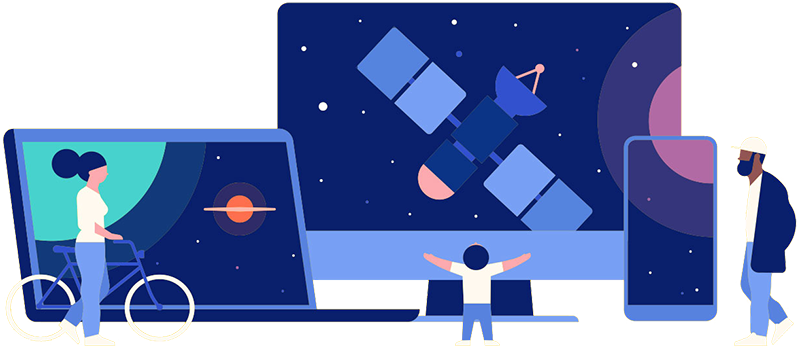
Online Access | Platform & Device Access | Cable or Satellite Access | Over-The-Air Access
Visit Access Guide
Need help accessing PBS Wisconsin anywhere?

Visit Our
Live TV Access Guide
Online AccessPlatform & Device Access
Cable or Satellite Access
Over-The-Air Access
Visit Access Guide
 Passport
Passport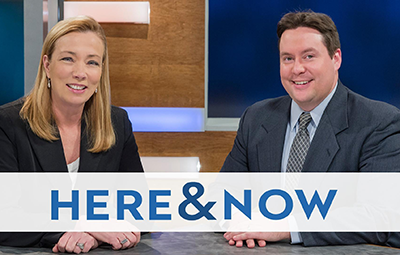

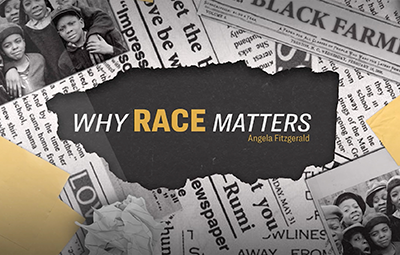
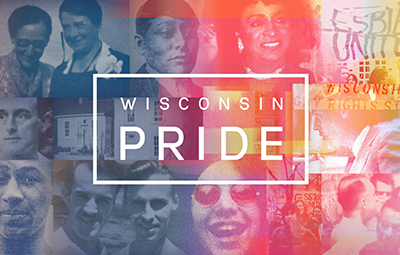
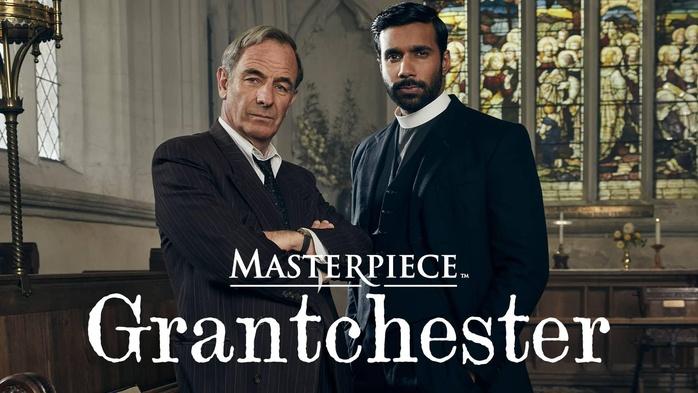


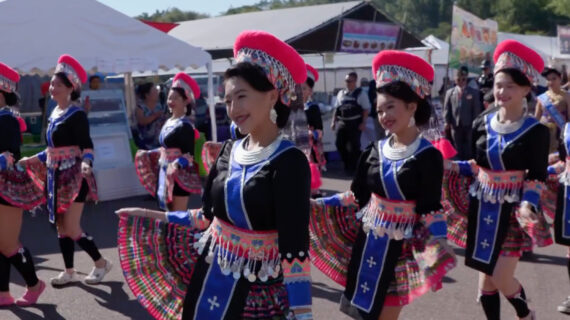
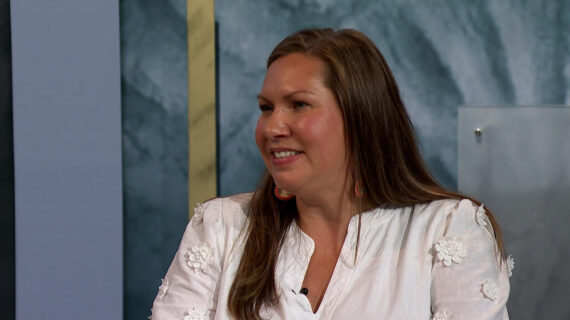
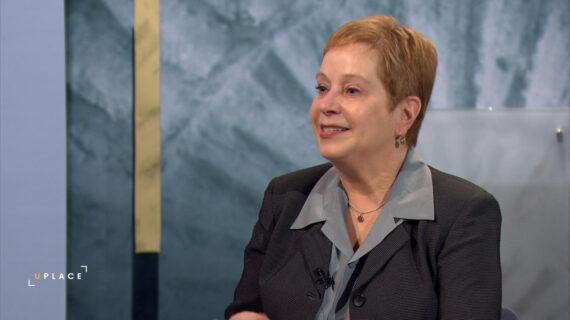

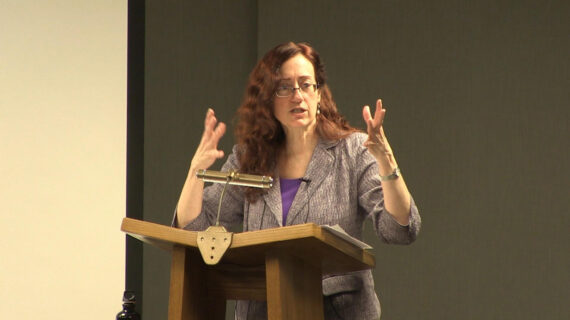
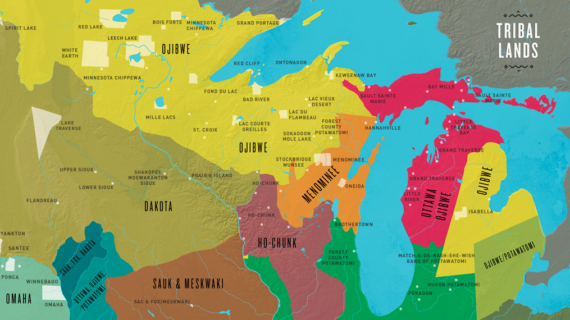
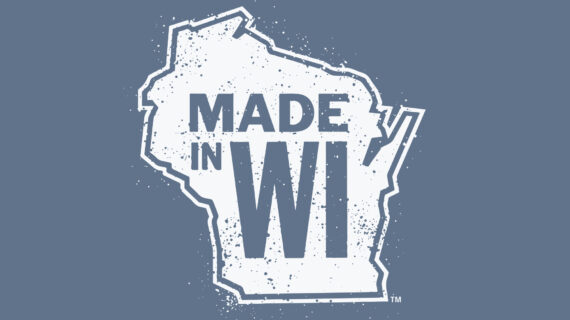
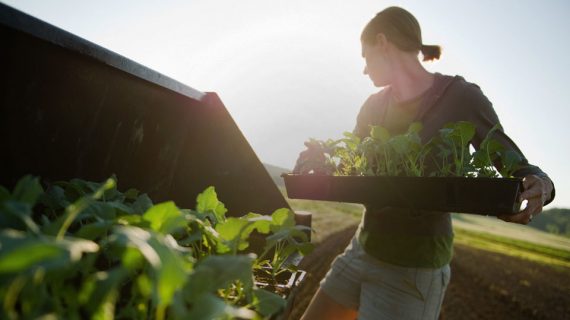
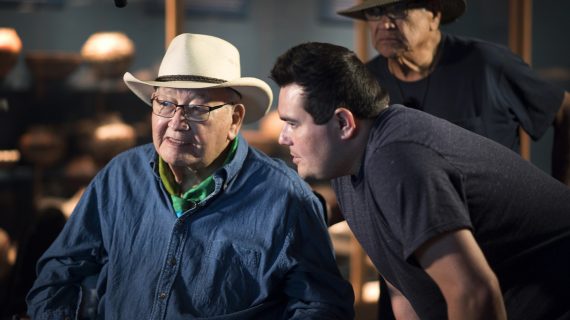



Follow Us